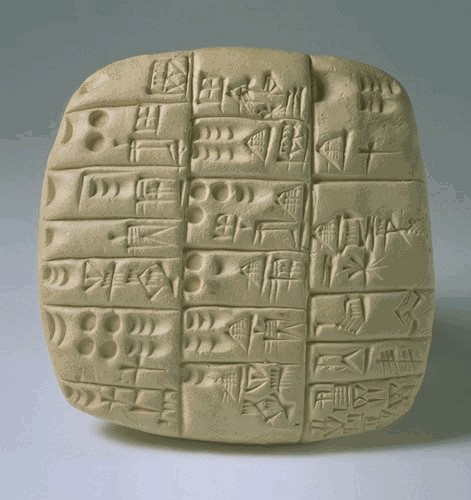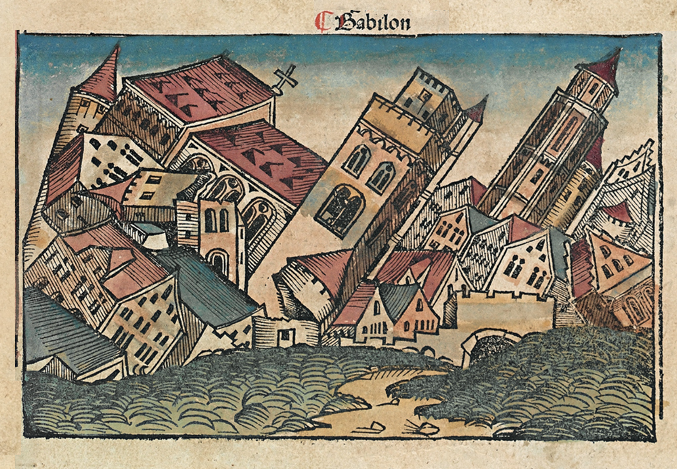Did you know technical writing had its origin in the ancient city of Babylon. In ancient Babylon technical writers were highly skilled professionals just as they are today. To be considered a professional, these specialists required many years of training and experience in the skills associated with producing quality documentation. They were a valuable asset to any ancient organization whether run by a ruthless dictatorial king or managed by a sympathetic local governor.
Technical writers in Babylon organized themselves into guilds or societies. In these societies they held exclusive rights for generating documentation for the King or Queen’s court or for the general public. In those days these technical writers were called scribes and were often connected with places of worship because of their connections with the temple priests.
The iClay tablet
 The primary documentation tool for Babylonian technical writers was a device known as the the iClay™ tablet. These devices were difficult to use and took years of training to master. They were normally held in the left hand and text was impressed upon its surface with a stylus made of reeds found in marshes sourced from an area in the fertile crescent of Mesopotamia. The stylus itself was created by specialist stylus makers or if they lack a supply of reeds they just grabbed a branch from the nearest tree.
The primary documentation tool for Babylonian technical writers was a device known as the the iClay™ tablet. These devices were difficult to use and took years of training to master. They were normally held in the left hand and text was impressed upon its surface with a stylus made of reeds found in marshes sourced from an area in the fertile crescent of Mesopotamia. The stylus itself was created by specialist stylus makers or if they lack a supply of reeds they just grabbed a branch from the nearest tree.
To create documentation, the technical writer created impressions on the iClay using the right hand. Due to the prohibition against left-handed writers, right-handed scribes advanced up the professional ladder while left-handers were stuck making the iClays and preparing styluses. Learning write right-handed was possible but that was not so common. In the world of Babylonian technical writers, the pecking order revolved around the ability to use the correct hand while making impressions.
Writing was done from left to right, column by column. When the bottom of the iClay was reached, the user simply turned the device over top to bottom and then continued writing on the back side until the tablet was full. Sometimes, lines were inscribed in the iClay to provide a straight line for text. Left and Right margins were sometimes set but often the text ran hard against the edge of the tablet. The concept of page numbering, table of contents and index had not been devised so the size of a tablet defined the length of a document.
Once the documentation was finished, the iClay was put out in the sun to bake usually for an entire day. Very few tablets were actually kiln baked as it was not thought feasible to do so and dried tablets could last many years in the dry climate of Babylon. Once baked, the tablet could be used by its intended audience. Storage was a problem as a completed document had some considerable weight. Most often it was stored in a library or simply stacked. This probably created some problems retrieving a document easily and quickly.
 Happily, if the library burnt down the structure would be lost but not the documentation. In fact the fire hardened and preserved the document. This meant 5,000 years later, the document could still be read. Today, if a library burnt down, the entire contents would be destroyed, hence the need for backups stored in deserted parts of the world such as the Midwest United States or around Washington, D.C..
Happily, if the library burnt down the structure would be lost but not the documentation. In fact the fire hardened and preserved the document. This meant 5,000 years later, the document could still be read. Today, if a library burnt down, the entire contents would be destroyed, hence the need for backups stored in deserted parts of the world such as the Midwest United States or around Washington, D.C..
For the King’s administration, these ancient technical writers published plans and projects of national scope. They hand-copied proclamations or decrees which were then sent to the far flung corners of the king’s domains. This is not unlike how the internet serves the same purpose does with today’s documentation. A few ambitious technical writers would be assigned to produce enormous documents carved into the sides of mountains or more likely pillars erected in the middle of town squares. This would be like that ads that people today have to skip through to see some video content or read something on a news site - annoying but necessary.
Ancient MarComm departments
Technical Writers, like today, did not hold exclusive rights for the marketing and/or promotion of great national events. The Marketing profession had not yet been invented. That was usually done orally by men on horseback gifted with loud voices that could project to even the back of any size of audience. Often these marketing people would leave behind the documentation written by their technical writing team.
Typical documentation content
Content of these documents were often mundane descriptions of plans and projects as well as financial and bookkeeping information. For engineering departments, technical writers produced documentation about irrigation planning and usage, field and crop management, civil engineering project planning, road layout and route planning. These technical writers closely matched their modern counterparts with the scope of their material limited only by the scope of the life in these ancient societies.
A distinguished legacy
Technical writing has a long and distinguished history dating back thousands of years to Babylon and perhaps even earlier. Like today, they were highly skilled professionals. They used specialized tools to document a wide range of products and services both for industry and for government. They were essential for the functioning of these societies. Through the work of these professionals we have a glimpse into the daily life of these ancient societies.
Oddly, although technical writers use far more sophisticated tools today, they cannot match the staying power of the ancient iClay. Progress is - as always - in the eye of the beholder.